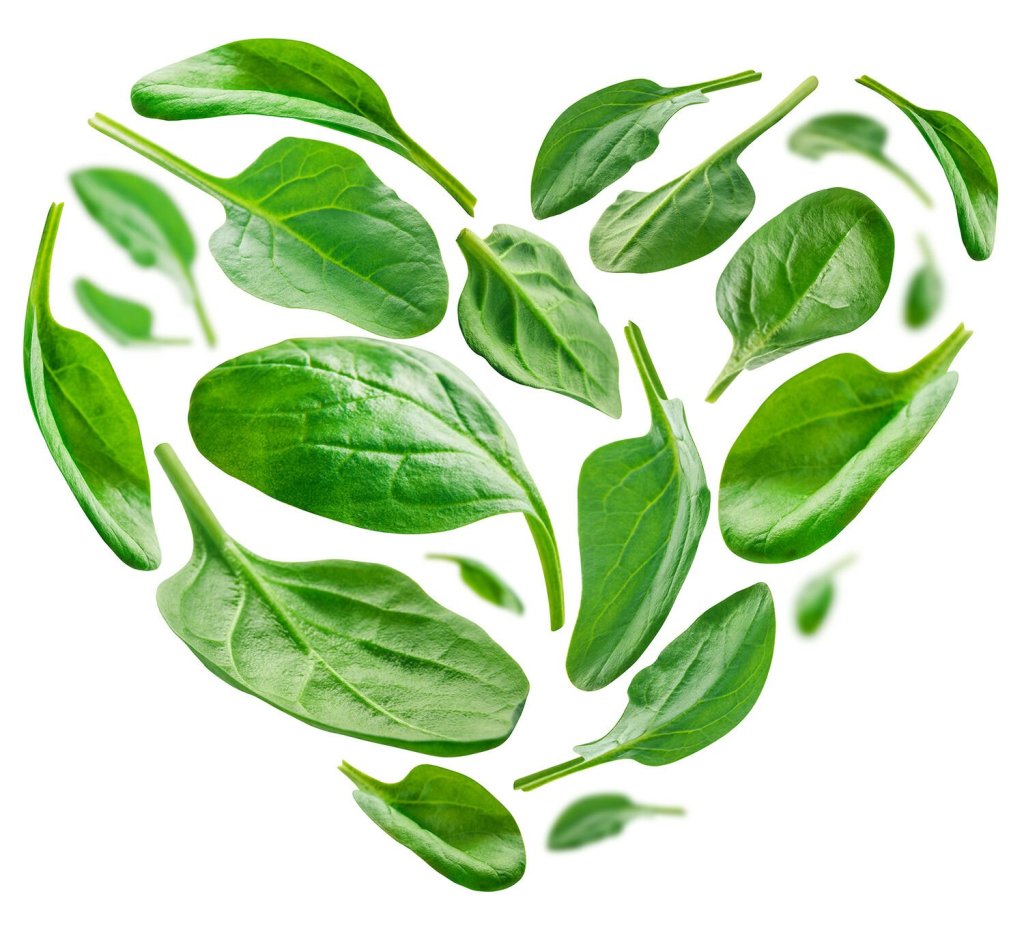Yes, you really do need this color in your diet — here’s why
Published 4:30 pm Tuesday, March 22, 2022

- Greens heart
Is green really that great? Leafy greens get their rich color from a compound known as chlorophyll, and while it does have some antioxidant and anti-inflammatory properties, it’s all the other good stuff in greens that make them nutritional powerhouses. The veggies are loaded with vitamins, minerals and other nutrients known to help fight disease and keep all your systems in shape. In fact, the darker the green of the leaves, the more nutrients tend to be concentrated inside — one reason spinach is a better bet than, say, iceberg lettuce. While all greens’ nutrients likely work together to keep you healthy, there are a few worth the spotlight.
Fiber regulates digestion — and lowers disease risk
Greens fill you up with fiber, which most Americans don’t eat the recommended 20 to 30 grams per day of. Although technically a carbohydrate, fiber isn’t digested like other carbs. Rather, it moves through your body, helping regulate blood sugar and insulin production, gut function, digestion and more. It also helps keep you relatively full on few calories, which aids in weight control. Research has linked fiber intake with a reduced risk of diabetes, heart disease, obesity and other conditions.
Trending
Antioxidants protect cells
Leafy greens are one of your best sources of antioxidants, including vitamins A, C and E and other phytotnutrients, which neutralize harmful free radicals that can damage cells and tissue, and may play a role in cancer and heart disease. For example, eating just two to three servings of leafy green veggies a week may lower your risk of stomach, breast and skin cancer, according to a report from U.S. Agriculture Research Service.
Vitamin K and nitrates help your heart
Your body uses vitamin K to make proteins needed for normal blood clotting and bone strength. Meanwhile, studies suggest naturally occurring chemical compounds known as nitrates help regulate blood pressure and blood flow.
For example, researchers from Edith Cowen University in Australia recently found that people who ate the most leafy greens had lower blood pressure and a 12 to 26 percent lower risk of developing heart disease. Even just one cup of raw or ½ cup of cooked greens per day had a positive effect.
Eat fresh: 3 recipes to shake up your sad salad night
Okay, but how much green do you actually need?
Trending
The USDA recommends adults eat two to three cups of vegetables per day — which only about 1 in 10 Americans do. Greens are a good way to up your intake because they’re so versatile. Here’s where it gets tricky: Because they aren’t densely packed, two cups of raw greens is equivalent to the USDA’s one cup of veggies. (For cooked greens, the ratio is 1:1.).
No matter how you eat them, pair greens with a small amount of healthy fat, like olive oil or avocado, which helps your body absorb the fat-soluble nutrients. And, when increasing your intake of any type of fiber, drink plenty of water to prevent constipation.

